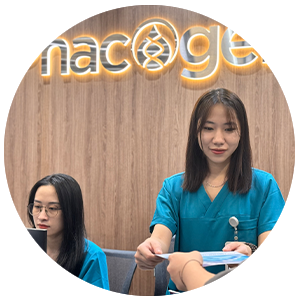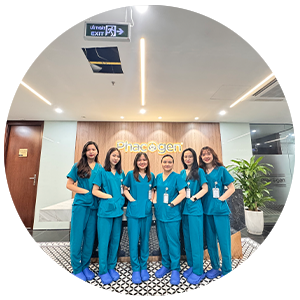A clinical trial found that the combination of all-trans retinoic acid, which is a metabolite of vitamin A, and arsenic trioxide was highly effective in children with high-risk acute promyelocytic leukemia and standard, or APL.
Nearly all patients in the trial survived two years without recurrence. No children with standard-risk APL required conventional chemotherapy, and those with high-risk APL required only four doses of the chemotherapy drug idarubicin (Idamycin PFS). Results of the trial, conducted by the Children's Oncology Group and sponsored by the National Cancer Institute, part of the National Institutes of Health, were published November 11, 2021, in the journal JAMA Oncology Press.
.
“This is a remarkable achievement and will be the new standard of care,” said Malcolm A. Smith, MD, PhD, of the Cancer Therapy Evaluation Program at the National Cancer Institute, which funded the multi-institutional, non-randomized phase 3 trial. “Twenty years ago, these patients were treated with intensive chemotherapy, including drugs that led to later heart problems in life. In comparison, all-trans retinoic acid and arsenic trioxide have fewer acute or long-term side effects.”
.
“As a pediatrician and an oncologist, I have had to have really difficult conversations with families about what their child is going through and what type of therapy they will have to undergo. to be cured,” said Dr. Matthew Kutny, head of the research team. “So being able to provide a therapy that is less intense and has fewer side effects, but at the same time has an amazingly high survival rate, is a really good solution for patients.”
.
APL accounts for 5% to 10% of acute myeloid leukemia diagnoses in children and adolescents. Symptoms of this cancer of the blood and bone marrow include heavy bleeding, easy bruising, low red blood cell count, fever and fatigue. In the past, treatment for children with APL involved anthracyclines, which can damage the heart.
.
An earlier trial by the Children's Oncology Group showed that children with APL treated with arsenic trioxide and all-trans retinoic acid, along with chemotherapy drugs including anthracyclines, had a two-year survival rate. no high events and low risk of recurrence. Event-free survival is the period of time after initial treatment that the patient remains free of disease progression, recurrence, or death.
.
The combination of all-trans retinoic acid and arsenic trioxide is currently the preferred initial treatment for adults with standard-risk APL. Adult patients with high-risk APL also receive chemotherapy, as well as maintenance treatment (additional treatment to prevent the leukemia from recurring).
.
Trong thử nghiệm của Nhóm Ung thư Trẻ em (AAML1331; NCT02339740), 154 trẻ em trong độ tuổi từ 1 đến 22 mới được chẩn đoán mắc APL tiêu chuẩn hoặc có nguy cơ cao đã được cho uống axit retinoic all-trans, cùng với arsenic trioxide tiêm tĩnh mạch hàng ngày trong ít nhất 28 ngày. Trẻ em có APL nguy cơ cao cũng được tiêm bốn liều idarubicin anthracycline trong giai đoạn đầu điều trị. Những bệnh nhân có nguy cơ cao được định nghĩa là những người có số lượng bạch cầu trên 10.000 / μL. Số lượng bạch cầu cao hơn trong lịch sử đã dự đoán kết quả kém hơn ở trẻ em bị APL.
.
However, in this trial, children with high-risk and standard APL had two-year survival rates of 99% and 100%, respectively. Two-year event-free survival rates were 98% and 96%, respectively. One child with standard-risk APL died early on treatment, and three children (one with standard-risk APL and two with high-risk APL) relapsed.
.
Fewer than 10% of children experienced serious side effects, which occurred only during the early stages of treatment. Side effects include increased blood sugar, liver irritation, and bleeding. Some APL patients are at high risk of developing mouth ulcers due to idarubicin treatment. A serious complication of APL is dedifferentiation syndrome, which can cause life-threatening inflammation. Doctors have been providing supportive care strategies to help participants manage this and other side effects.
.
Dr. Kutny points out that because there is no need for maintenance treatment, the time a child needs treatment has been reduced from more than two years to about nine months. He said further monitoring will be needed to determine the long-term effects of treating children with all-trans retinoic acid and arsenic trioxide.
.
“Arsenic is often considered a poison, but it can also be a powerful drug,” Dr. Kutny notes. “Arsenic trioxide has been used in traditional Chinese medicine for millennia. The difference between a medicine and a poison is really the dosage. Over time, we have found the correct dosage that can be effective in killing these types of leukemia cells without harming other healthy tissues.”
.
Arsenic trioxide works cooperatively with all-trans retinoic acid to block the activity of proteins necessary for leukemia cells to survive and grow. Dr. Kutny notes that the Children's Oncology Group is currently researching ways to give arsenic trioxide in oral form, making it easier for children to take.
.
Translator: Hoang Hiep – Phacogen Institute of Technology,
PhD in Biotechnology - UST University, Korea
Source of article:





